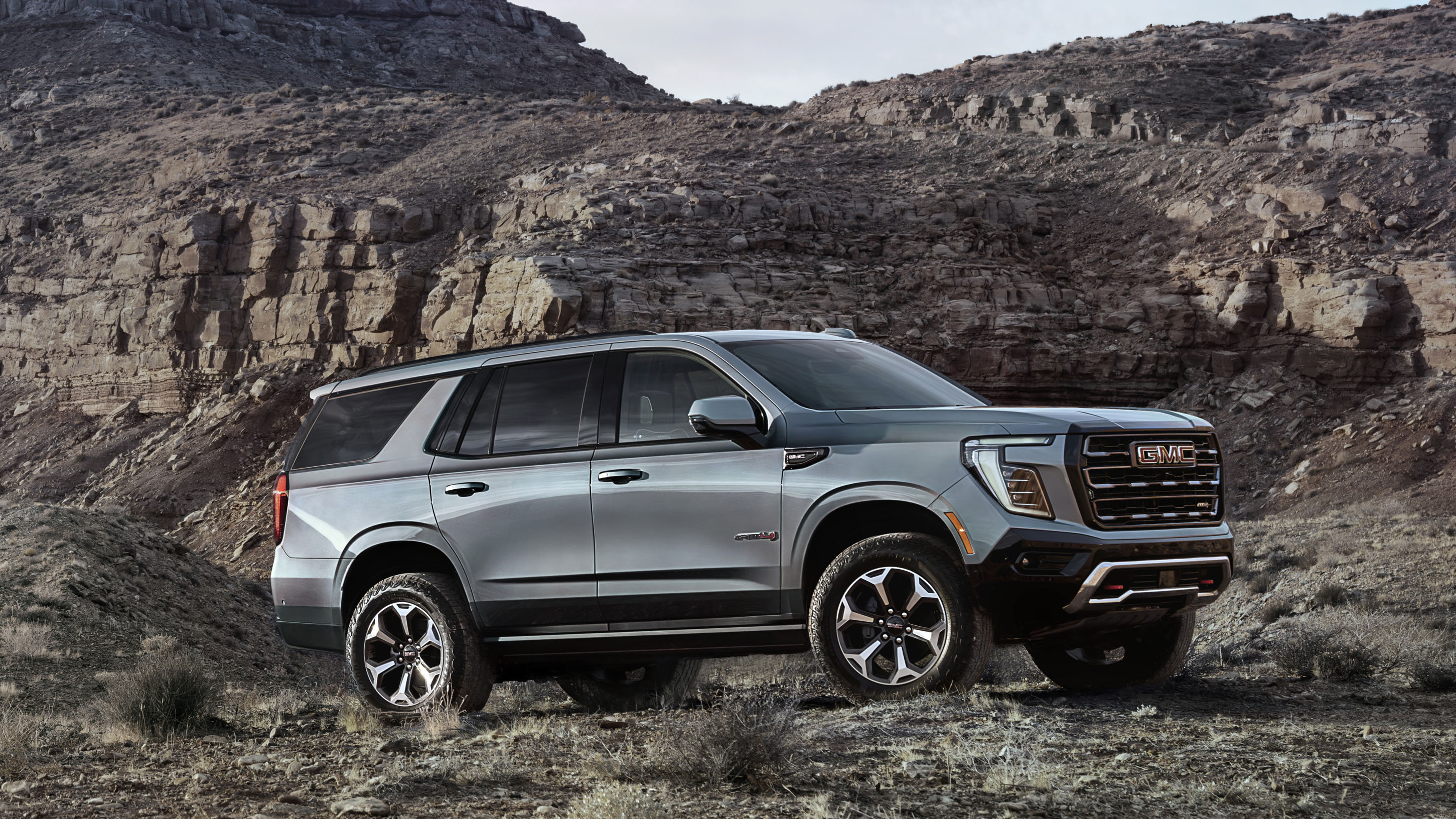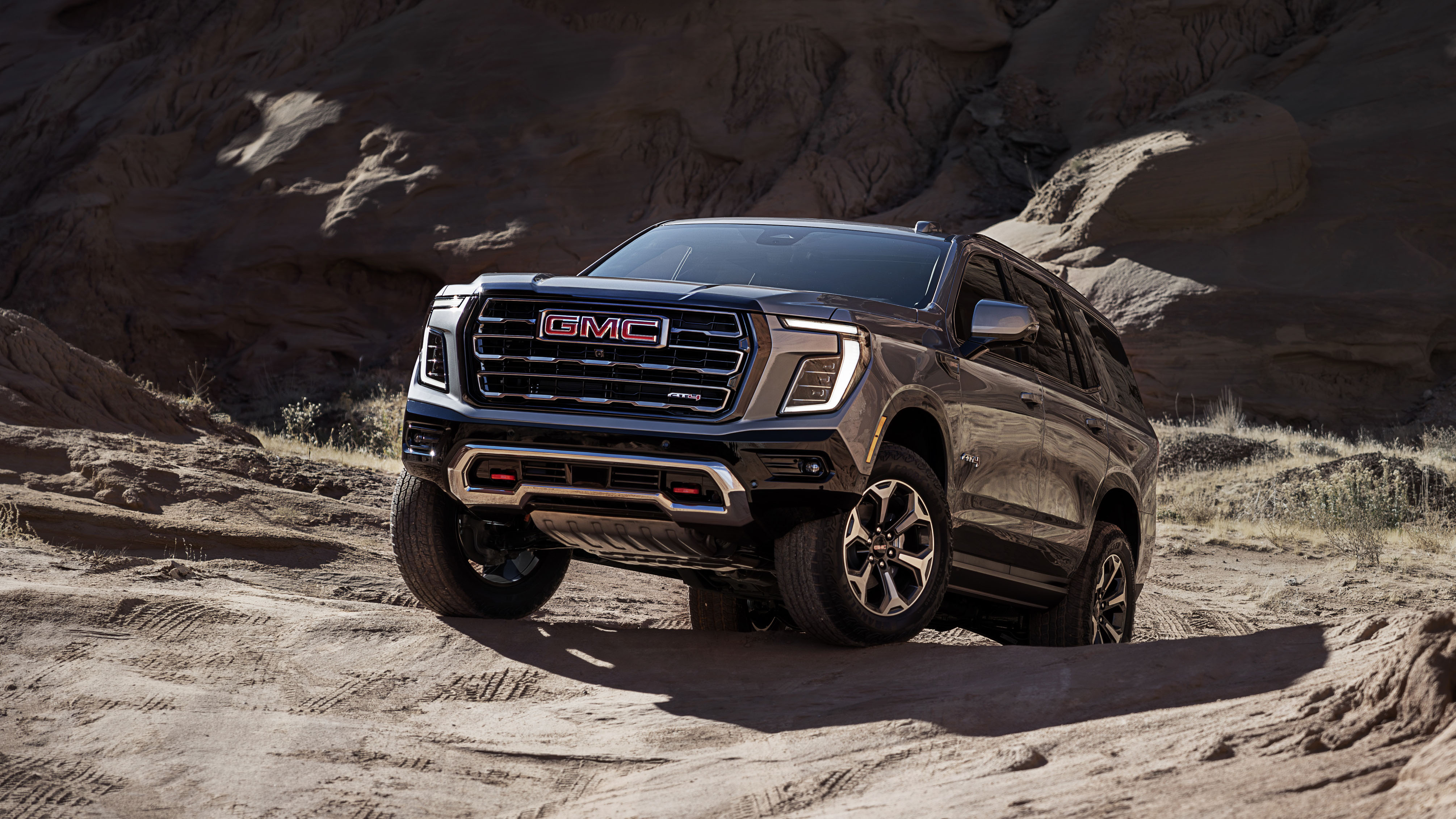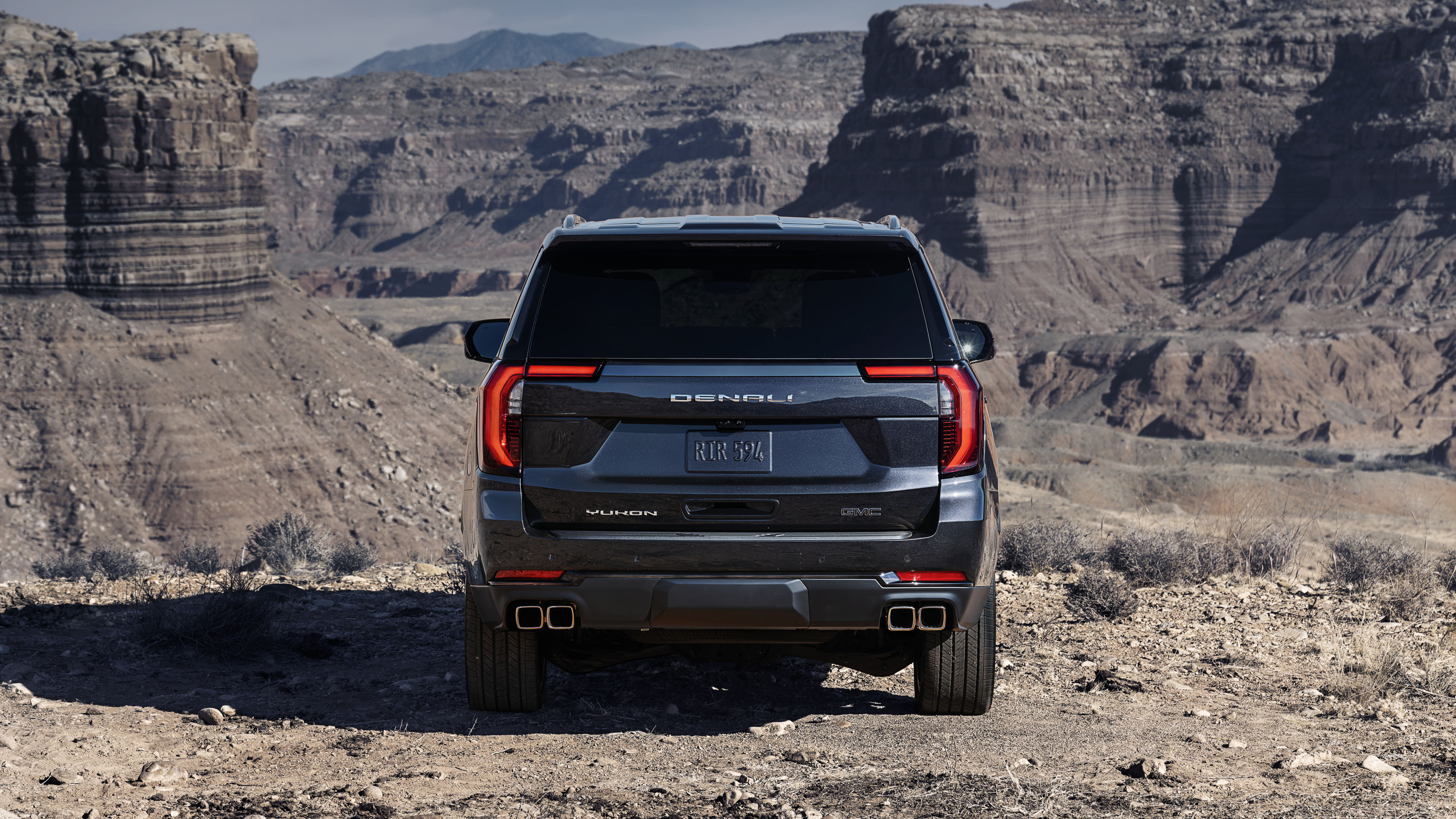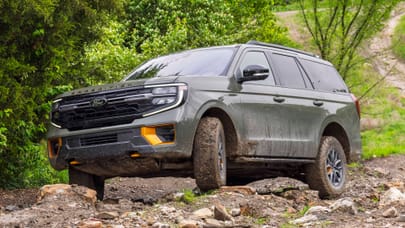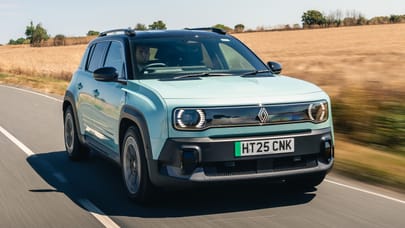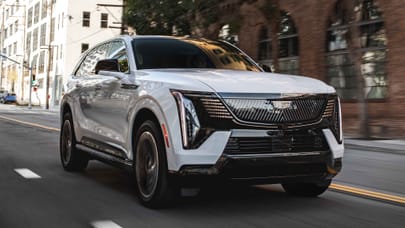
GMC Yukon review
Good stuff
Versatile, right-sized engines, comfortable ride
Bad stuff
A bit pricey, horrid fuel economy, generic styling
Overview
What is it?
It’s the GMC Yukon, AKA the nice Chevy Tahoe, also-also known as the other Cadillac Escalade. If you need a premium three-row hauler, this is certainly… three of them.
Surely you’re used to the ole’ badge switcharoo by now?
We are, but if you saw this review three times with the names swapped out, you’d raise an eyebrow, too. We haven’t even mentioned the extended wheelbase versions yet, either.
Alright, carry on.
Thanks. The GMC Yukon is the brand’s full-sized, three-row SUV, meant to split the difference between being rugged and upmarket; Escalade quality without going fully formal, so you don’t mind if it gets dirty. It comes in three trim levels, with the option of 2WD or 4WD, though some higher trims lock you in to the latter. There’s even a couple of engines to choose from, both being V8s, which some will see as the choice between steak and more steak. Order off menu, and you’ll be treated to a 3.0-liter turbodiesel for more torque and extra miles.
Indeed, the Yukon is very ‘meat and potatoes’ in that it’s a big car with a big engine to pull it along, and a modicum of ruggedness, contingent on trim. The ride and several other elements are what elevate it above casual dining (well, driving). Potential rivals outside of its GM family include Ford’s Expedition and the Rivian R1S.
Is it nice to drive?
Driving the Yukon is very much a breath of fresh air compared to other three-row SUVs that try to do more with less, but come up short, like the Chevrolet Traverse. This formula may be an old one, but it’s a tried and true classic. The simple fact is the standard V8s – either a 335hp 5.3-liter or 420hp 6.2-liter – are a good fit here, even with the predictably lackluster fuel economy. Paired with independent suspension, it makes the three-row shuttle far less of a chore to manage, made even easier with the available adaptive air suspension.
What’s it like inside?
There’s definitely the sense that you’re getting what you paid for, with premium-looking materials and an overall upmarket cabin, made even better in certain trims with executive seating in the second row, available seat-back entertainment screens, a big ole’ 16.8in tablet-like infotainment screen, an 11in digital driver display and all the chrome touchpoints you can eat (don’t, though).
As you would imagine, the cabin is quite airy, with allowances for 25.5 cu ft of cargo space behind all the rows, opening up to 122.8 cu ft when maximum cargo capacity is required. If this doesn’t meet your haulage needs, the Yukon can trailer up to 8,400lb of stuff behind it.
What about the XL?
Oh yeah, there’s an extended wheelbase version. It’s the same but with 15 more inches to work with, and the engineers make very good use of it. Cargo space behind the third row increases to 41.5 cu ft and those sitting all the way back get a couple more inches for their legs to fit. 15 inches of more car also adds to the bottom line, as one would expect.
What's the verdict?
With the GMC Yukon, what you see is what you get, and thankfully, you get an eye full. The full-sized utility vehicle has all the ample space one would expect and can be outfitted accordingly based on needs with little compromise to its promised premium-ness. An available off-road-prepped AT4 might not be much of a threat to Ford’s Expedition Tremor, but we’re not turning our noses up at enhanced capability, even if it’s a modest upgrade.
On that note, the Yukon’s biggest contenders are its close relations, the Tahoe and Escalade. It’s priced higher than one, but not as outwardly luxurious as the other, which is basically what cross-shopping boils down to.
Whichever rivals it's stacked against, the Yukon’s qualities are competitive enough for it to hold its own, with a comfortable ride, plenty of room and a selection of engines that don’t leave you wanting for anything except, perhaps, more gas money.




